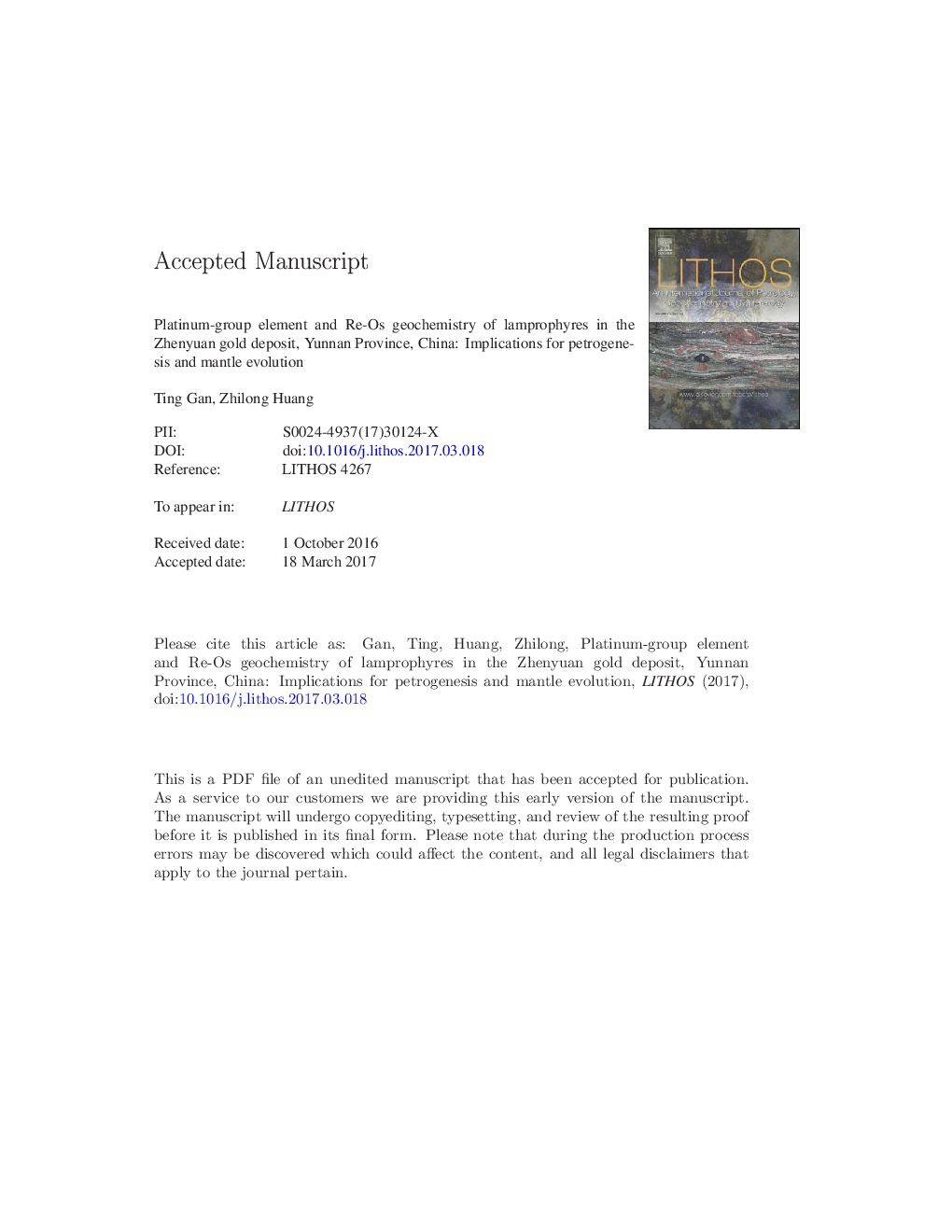| Article ID | Journal | Published Year | Pages | File Type |
|---|---|---|---|---|
| 5784131 | Lithos | 2017 | 56 Pages |
Abstract
Cenozoic lamprophyres are widespread along the Ailaoshan suture, SW Yunnan, SW China, where there are also many important gold deposits, especially the Zhenyuan deposit. We have carried out a geochemical investigation of the Zhenyuan lamprophyres in terms of major and trace elements, platinum-group elements (PGE), and Os isotopes. The Zhenyuan lamprophyres can be classified into groups with high or low Os concentrations. The 187Os/188Os ratios, corrected for in situ growth, are highly variable in both types of lamprophyre, ranging from mantle values up to 1.13. The highly radiogenic Os isotopic signatures are interpreted as being due to long-term accumulation of elevated Re/Os in the lithospheric mantle, as a result of subduction-related metasomatism. The highly variable 187Os/188Os ratios of the low-Os lamprophyres might also have resulted from metasomatism of a deeply derived carbonate melt, which did not elevate Os concentrations significantly. The Zhenyuan lamprophyres feature low PGE contents and can be classified into two groups: A and B, based on their primitive-mantle-normalized PGE patterns. Group A is characterized by strongly negative Ru anomalies, while Group B is characterized by slightly negative Ru anomalies and low total PGE contents. The PGE characteristics may be explained by a two-stage model of magma evolution. Very high Cu/Pd and low Pt/Y ratios indicate the first stage involved sulfur saturation and sulfide removal, producing variable total-PGE concentrations, especially in Group B. The second stage involved S-undersaturation and the early crystallization of silicate minerals (e.g., olivine) along with laurite and/or Ru-Ir-Os alloy, fractionating PGEs and producing marked negative Eu anomalies.
Related Topics
Physical Sciences and Engineering
Earth and Planetary Sciences
Geochemistry and Petrology
Authors
Ting Gan, Zhilong Huang,
